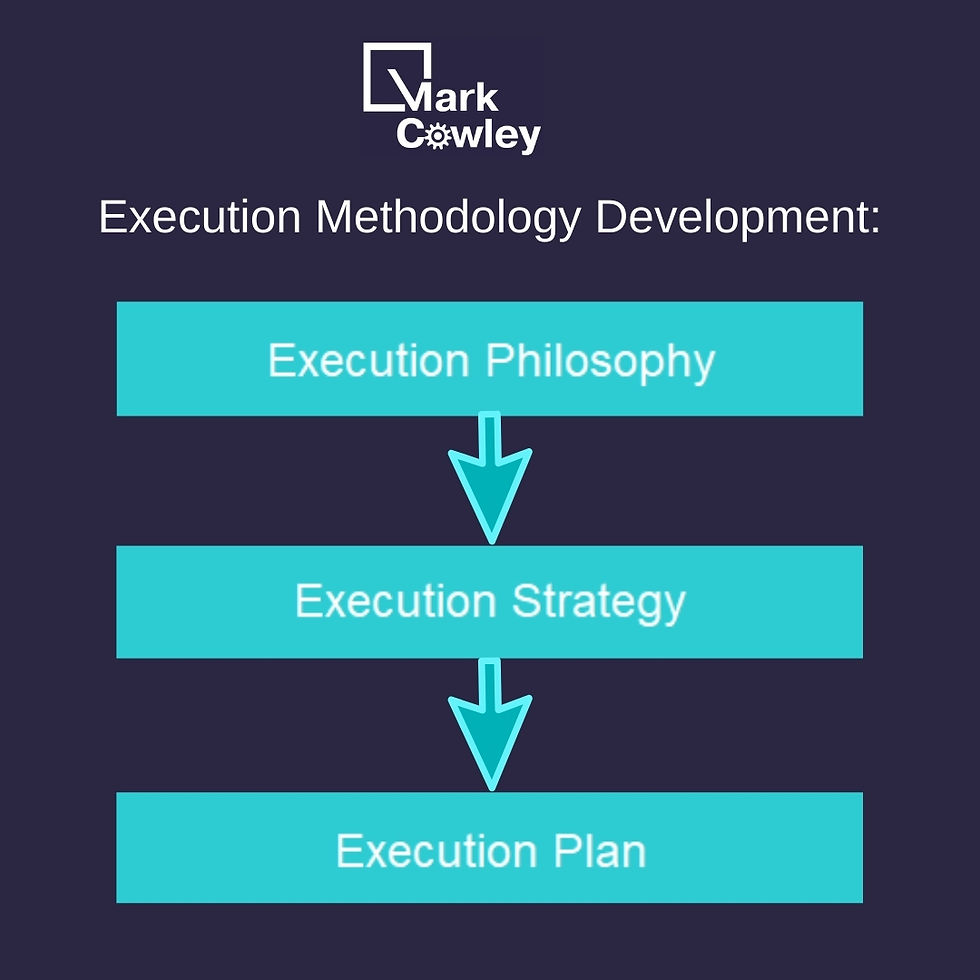How do you develop a really good Project Execution Plan (PEP) with all Stakeholders & Team members?
Develop a Project Execution Plan with your project team based on what you have learned, what you developed from execution philosophy and strategy development (see my previous blog post) that will match to the maximum possible extent the customer’s culture, personalities, organization, work practices, etc whilst delivering the project scope and deliverables to match or exceed the stakeholder's expectations and deliver the project performance (including financial) required by your organisation.
Use the execution planning phase and time to build both internal and external relationships with your project team, external stakeholders (especially the customer's team)
Convey your project execution strategy to your team and stakeholders. Be prepared to adjust your strategy, or fine-tune it, as you gain experience with them and build an understanding of their needs.

Your PEP should be framed in the context of the contract from the customer including the commercial framework (Lump Sum, Cost Reimbursable, hybrid.....) and also your subcontracting/contracting strategy for the project:

Setting Project Goals & Objectives.
Teams can be united and challenged by a common purpose by doing the following:
Developing a project mission statement and establishing broad project goals (project team goals)
Establishing specific goals by functions, by workgroups within the project team
Developing a hierarchy (logic network) of group goals that provide a structure to achieve the broad project goals
Developing a shared understanding of goals. What is the intent, the what, the why?
Getting the team to buy into the specific and overall goals so that they become their goals, not just the Project Manager’s goals
Letting the team clarify the goals in words that they will understand
Making goals must be specific, clear, understandable, measurable, achievable, and realistic
The goals and objectives developed should form the underlying basis of the Project Team Charter (see above example).
Project Organisation
Adapt your leadership style to fit with your customer. Develop a Project Organisation that suits the customer, the scope and the contract type. Select team members whose personalities and temperaments blend with those of the customer’s team. This is usually difficult to accomplish, but do the best job that you can. If major personality conflicts develop down the road, do not let them fester. Remember, your organisation is the one that must be flexible to meet the needs of the customer. Make a personnel change if needed.
Team members should get to know their counterparts, their counterparts’ interests, and their values so that they can establish a relationship based on common interests. Have some off-the-job relationship with your customer if possible, but keep it ethical.
Relationship/Team Building with Stakeholders and Team
I highly recommend having formal team/relationship building as well as social events with the project team and their customer counterparts early in the project during the mobilisation phase and planning process. This particularly important in consortium or joint venture teams and/or complex stakeholder arrangements (multiple owners/customers) I have seen a lot of useful relationship building in joint workshops especially with an experienced and knowledgeable facilitator:

© Akin Belo of Kintla

© Akin Belo of Kintla


© Akin Belo of Kintla
Customer Relationship
Determining the customer’s expectations of your organisation is as important as determining what the written scope of work/services document (usually an attachment to the contract and also found in the Invitation to Bid package) and can help to frame your PEP. What is not written can be just as important as what is written, sometimes more so.
Learn as much as possible about your customer’s executive management. You will undoubtedly have had contact with them during the proposal phase and probably intense discussions as the project was awarded/kicked off and moves into the execution phase.
Tip-off your own management about the executives they will be dealing with so that your management can prepare their own strategy. Develop a customer relationship plan (sometimes called a zippering plan) from Project Leads up to the highest level
Use the planning process to establish an open, business-like but collaborative execution approach from the start. Be absolutely certain that you and your team always maintain good communications, even if it is bad news. Stakeholders both external (including the customer) and internal hate surprises. Knowing and understanding the behavioural characteristics of the people you are dealing with is a key factor in the execution strategy and PEP.
Be honest. Be open. Develop trust. Understand your counterparts’ (customer's Project Director or Manager) stature with his or her management. Design your PEP and manage expectations in a way to help make your counterpart successful and look good to their management—but do not sacrifice your own organisation in the process.

Comments